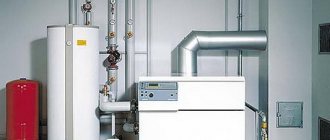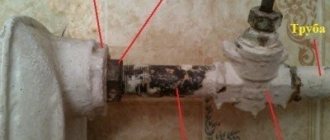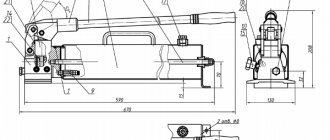The thermostatic head for heating radiators belongs to the control valves of a water heating system. Experts call it a radiator valve or a thermostatic valve. The device appeared in Russia relatively recently, and was immediately included in the appropriate regulatory framework as a legitimate element of a water heating system.
The thermostat is designed to regulate the heating level of one heating radiator or a chain of series-connected batteries. With its help, you can set an individual temperature regime in one of the rooms of your house or apartment. The versatility of the device lies in the fact that it is compatible with any radiator models.
How important and necessary is a thermal head?
The thermostatic head for a heating radiator allows you to optimize energy consumption, which can bring significant savings in thermal energy throughout the heating season. Using a heating boiler, you can raise or lower the heating temperature in all heating radiators at the same time.
However, this is not always necessary, since different rooms have different needs for the level of heating. The bedroom, children's, living room, dining room and hall need a temperature of 200 - 220, in the bathroom a comfortable level of air heating is desirable around 240 C, and in utility rooms 160 C is sufficient.
Level 120 and 70 for special occasions. By installing thermostatic heads, homeowners can adjust the temperature in each room according to their wishes.
Typical questions
How to insulate a heating radiator so that it does not overheat?
To reduce the level of heating of the room from a radiator without adjustment devices, you should use thermal insulation materials. First you need to prevent air circulation near the heated surfaces of the heating radiators. For this purpose, you can use ordinary foil and wrap it around the radiator. A layer of heat-insulating material must be laid on top of the foil covering.
In residential premises, you should not use materials such as asbestos fabric and asbestos sheets, mineral wool and fiberglass, as they emit toxic substances into the air that can be harmful to health.
For thermal insulation, it is advisable to use woolen fabric with good heat resistance.
Which thermostats are better?
You should choose a thermostat taking into account the type of heating system, personal preferences and the allocated budget.
This device has sensors that analyze the temperature and automatically adjust the heating level of the heating radiator based on the set settings. A more budget-friendly option is to install a control valve, with which you will have to manually regulate the heating temperature.
Thermal head device
To make it clearer what the device is capable of and how best to use it, we need to consider what it consists of and on what principle it functions.
The thermostat head is a sealed hollow cylinder, inside of which there is a bellows - a container with a working substance. The bellows senses changes in air temperature in the room through the slots of the rotating plastic cap.
The head body is connected to the valve with a special nut. The lower figure shows a sectional view of an angle faucet with a thermal head for a radiator. As can be seen in the diagram, the thermal head consists of 10 elements.
Expert advice
A few tips from professionals will help the apartment owner install and configure the thermostatic valve with his own hands and in accordance with all the rules:
- It is important to mount the device in such a way that the direction of water movement coincides with the direction shown by the arrow shown next to the marking on the body, otherwise the operation of the thermostatic valve will be incorrect.
- For underfloor heating systems, it is better to choose thermostats with a side valve - this makes settings easier to access.
- In public areas, thermostatic valves with remote control or pre-setting should be used for installation to protect them from outside influence.
- To seal the threaded connection, you should not use fum tape, but polymer or linen threads with heat-resistant paint. When heated and significant temperature changes occur, thermal expansion of the pipes occurs, the density of the tape may be disrupted, which will lead to the formation of a leak.
- It is more appropriate to place the valve on the supply pipe.
- The distance from the floor to the installation site of the thermostatic valve should be at least 40-60 cm. Initially, manufacturers configure them to capture temperature changes at this level. If it is necessary to change this parameter, then additional configuration of the device is performed.
- The thermostatic head must be installed on the valve in a horizontal position and turned towards the inside of the room. If you install the thermal head vertically, the warm air from the riser will interfere with the normal operation of the sensor.
- When installing a thermostatic valve in a one-pipe heating system, it is necessary to install an additional bypass section - a bypass. It should be located between the sections of pipelines entering the heating device and leaving it (as in the photo below).
Principle of operation
The operation of a thermal head for a heating radiator is as follows:
- Markings on the rotary ring indicate the 4 main positions of the regulator. By combining a certain mark on the scale with the body mark, the operating mode of the device is set;
- if the air begins to heat up above the established norm, then through the slots of the rotary cap it begins to heat the bellows with the working substance;
- the heated substance begins to increase in volume, which sets the rod in motion;
- the rod, in turn, begins to close the passage hole through the spool, thereby reducing the flow of coolant into the battery;
- as a result, the air in the room will begin to cool, and the bellows with the working fluid will cool accordingly;
- the reverse process occurs, and hot water will be supplied to the radiator with the required intensity.
The control and accuracy of adjustment may vary between devices. However, the operating principle is the same for all mechanical models.
Thermal head, how it works, experiment.
For your information
In some models, the head is attached to the valve body using a threaded connection, while in others it simply snaps into place. When threading, it is tightened by hand and slightly tightened with a wrench. In a device with latches, you need to set the handle to the “MAX” position, insert the head into the corresponding groove and press until you hear a click. If the device is assembled correctly, the thermal head will rotate easily and smoothly.
Some people think that in order to connect an infrared heater to a thermostat, you need to proceed in much the same way as with a liquid heating system. But this is not true, because connecting a thermostat to an infrared heater is a completely different process. First of all, due to fundamental differences in the principles of operation of regulators. The temperature of the radiators is regulated by shutting off the coolant flowing through the thermostat. In an infrared heater, liquid does not flow, and its temperature is regulated by disconnecting from the network when the required air temperature is reached.
Another fundamental difference in connecting a thermostat to an infrared heater is that the thermostat must be connected to the electrical network that powers the heating device in order to be able to turn it off. In heating system radiators, such a need exists only for digital thermostats. And only in order to be able to program the microcircuit and track the result on the display.
Types of thermal heads
Thermal heads for batteries are divided into devices based on the type of built-in mechanisms:
- manual;
- mechanical;
- electronic.
Manual
In their operation, temperature control devices resemble the operation of an ordinary water tap. Turn the knob to regulate the intensity of the coolant flow entering the radiator. The scale was calibrated based on a series of instrument tests. Each division corresponds to the temperature that should be established in the room.
pros
Low cost of the device. Easy to install and handle. Beautiful appearance.
Minuses
The degree of heating of the battery is set manually using the thermostat head. This means that adjusting the temperature in the room is impossible while the owners of the home are sleeping or absent.
Mechanical
The thermostat rod closes, and the passage of the coolant in the pipe in front of the radiator is cleared, moving automatically following the bellows changing in volume. The temperature value is set manually using the scale of the rotary cap, setting restrictions on the operation of the thermostatic valve.
pros
The situation when the presence of the owners is required to adjust the device is eliminated. The thermostat maintains the set parameter around the clock, which significantly saves thermal energy.
Minuses
The need for constant monitoring of the correct installation and execution of the specified temperature conditions by the device.
Electronic
The automatic thermal head with electronic control has an expanded range of functions. The principle of operation of the thermostat is the same as that of a mechanical device. The head has the ability to fine-tune. The thermal head is installed directly on the thermostatic valve and makes it possible to regulate the air temperature in the room.
pros
The advantages include the presence of such functions as:
- programming the device temperature modes for each day of the week;
- “Boost” enables rapid heating of the battery;
- “Vacation” sets a constant heating mode for the entire period of long absence of the owners in the house or apartment;
- “Offset” is triggered when access is difficult or the battery is located in a deep niche;
- "Open window" When opening the windows, the head will automatically lower the heating temperature of the radiator.
Minuses
The disadvantages include the high cost of an automatic thermostat head. This should also include the need to monitor batteries and timely replacement of AA batteries.
Thermal heads for heating radiators differ in the mounting method - these are:
- taps with thermal heads, straight and angular;
- wireless;
- with remote sensor.
Valves with thermal heads - straight and angular
These include all manual and mechanical devices (see chapters “Manual” and “Mechanical” above). Straight (through) models have a tee for inserting into a straight pipe.
Corner thermal heads are installed in the corners of rotation of the heating main in front of the heating radiator.
Wireless
A special feature of wireless thermostat heads for heating batteries is that they are controlled via Bluetooth from a smartphone or tablet. Wireless thermostats are completely independent devices that do not require additional equipment. The main advantages of such devices are:
- the ability to control not only remotely, but also using touch buttons located on the thermal head body;
- programming for each day of the week or for a longer period;
- the presence of self-learning functions, child protection, warning of rod oxidation and open window recognition.
With remote sensor
The remote sensor is an elongated non-ferrous metal flask filled with liquid. The flask is connected by a steel tube with a bellows, through which the liquid moves in one direction or another depending on the increase or decrease in the air temperature in the room.
A bellows is a container with accordion-shaped walls, so it can both expand and contract by acting on the valve stem.
A 2 meter long connecting tube allows you to place the remote sensor in any convenient place.
Purpose of the thermal valve
The valve solves two problems: maintains the room temperature at a comfortable level and saves energy.
But in order for it to really cope with such functions, you need to understand in what cases the device is appropriate and how to install it correctly.
If in the middle of winter there is a need to open the windows so that the temperature in the room drops to an acceptable level, a thermostat is definitely needed. But it won’t help when the radiators are barely warm—it will probably make it even colder.
In the second case, it is better to try to regulate the temperature in the room differently: change the volume of coolant in each radiator, adjust the operation of the boiler (for a large area), select the optimal circulation pump or adjust the operation of the existing one.
The price of a thermostat ranges from several hundred rubles (200-600), so re-equipment of the heating system will not be expensive. But there are also expensive models
As a temporary measure, control valves can be used. But it is not recommended to use ball valves for these purposes.
Basic criteria for choosing a thermal head
Today, the heating engineering market is filled with a wide range of thermal heads of various designs, mostly manufactured by branded companies. In order for the consumer not to get confused among this variety of models, experts recommend being guided by the following selection criteria.
- It is advisable to select thermal heads from the same manufacturer for heating radiators.
- When choosing a device, you should give preference to those models that require a minimum of additional fittings and fastening and connecting elements.
- If a small room includes one or two living rooms, then it is advisable to install manual valves with thermal heads in each of them.
- In one-story buildings, it is advisable to install mechanical thermostats and thermostat heads with remote sensors.
- In two and three story townhouses, owners can choose to have wireless thermostatic heads. They must be installed in houses connected to the Smart Home system.
- The products of a branded manufacturer, compared to mass-produced counterfeits, despite their high cost, will not let you down for many years.
- The anti-vandal casing will protect against careless attempts to interfere with the device settings.
- The design of the thermal head should not contrast with the background of the radiator and fit harmoniously into the interior of the room.
- In order not to run into a fake, you need to ask the seller for a quality certificate.
Location of regulators
If the radiator is not covered with anything, then installing thermostats on radiators is best done on the heating device itself. However, if the design is equipped with a thermostat with a remote sensor, then it can be located from the valve at a distance of up to 8 mm.
The thermostat can also be installed on the horizontal area of the pipe. In the place where the entrance to the heating radiator is located.
Installing a thermal head on a heating radiator
Connecting a thermostat to a radiator consists of two operations - installing a thermostatic valve and installing a thermal head.
How to install a THERMAL HEAD on a heating radiator with your own hands
Radiator valve installation
Winding flax thread onto the valve outlet threads
Winding flax thread onto the thread of the supply pipe
We coat the winding with sealant
Securing the valve seat
Installing the valve on the pipe
Connecting the valve to the radiator
Valve installed
Installing a thermal head
Install the thermostat as follows:
Set the regulator to the maximum open position
We screw the thermal head onto the valve thread
The thermostat must be installed perpendicular to the radiator
Common Mistakes
Correct installation requires attentiveness from the master at every stage of work in order to avoid mistakes. The most common problem is the vertical position of the head. This leads to the fact that the room stops heating, since the thermostat itself heats up from the incoming air.
Often the wrong installation location is chosen. You cannot install the regulator at a point where the air temperature is very different from the average in the room. Due to the wrong choice of installation location, the use of a thermal head loses its meaning.
Features of setting up the Danfoss electronic thermal head
adjusting the valve and thermostat of the thermal battery
By default, the thermostat is set to the energy saving program P 1. You can select the program that best suits your family's lifestyle:
- P 0 – constant temperature 210 C around the clock.
- R 1 – energy saving, in which every night from 22-30 to 6 am the temperature is maintained at 170 C.
- R 2 - an extended energy-saving program, which raises temperatures up to 170 C every night from 22-30 to 6 am and on weekdays from 8 am to 16 pm.
- You can create your own settings in the energy saving program. To do this, press the middle button of the program menu and select the desired one. Using the arrow keys, you can set energy saving periods for weekends, weekdays, all days of the week, or one day.
- Once the settings have been selected, they are confirmed by pressing the bottom key.
Characteristics of thermal valves
For your information, here are a number of basic technical characteristics of thermostatic valves:
- The maximum operating pressure level is 1.0 MPa.
- Pressure testing before commissioning is 1.5 MPa.
- The maximum operating temperature is +110 ºС.
- The maximum permissible ambient temperature is +50 ºС.
- The valve capacity is from 1.6 to 2.5 m³/h.
- Temperature control range - +20…+60 ºС.
- Response time: 25 min.
- MTBF with manual control - 8000 cycles.
What materials are they made from?
Corrosion-resistant metals are used to make the thermostatic valve body:
- Brass.
- Bronze.
- Stainless steel.
Additionally, the surfaces of brass products are nickel-plated, and the bronze body is either also nickel-plated or coated with a layer of chrome.
Rating of popular manufacturers
Lists of the most popular manufacturers of thermal heads help the consumer to correctly navigate the wide range of thermostats for radiators on the heating engineering market. Based on an analysis of information published on the Internet, the following number of companies is presented:
- Valtec;
- Danfoss;
- Oventrop;
- Thermo;
- Honeywell;
- Caleffi;
- Salus.
Valtec
The company produces reliable heating devices and thermostatic heads. The brand is of Italian origin, although all production facilities are located in Southeast Asia. One of the models of thermostatic heads presented on the Russian market, VT.1000.0.0, allows you to automatically regulate the coolant flow with high accuracy depending on the set temperature in the room.
pros
High precision settings. Beautiful design. Long service life.
Minuses
So far there have been no negative reviews.
Danfoss
The well-known Danish company Danfoss has been developing energy-saving technologies for more than 60 years. Its products, and in particular thermal heads, are very popular in the Russian heating engineering market. Programmable electronic devices are often included in the Smart Home system. The microclimate in the house can be controlled by software installed on a smartphone via WI-FI.
pros
High efficiency, reliability, beautiful design.
Minuses
High cost of the device.
Oventrop
The success of one of the leaders in the production of fittings for utility networks, including thermostats for radiators, Oventrop, was achieved due to the high qualifications of the engineering staff and the rest of its employees. The most popular models of thermostats are the Uni line. The devices are equipped with a liquid bellows, designed for the maximum temperature in the heating system - 1200 C.
pros
Easy to use. Beautiful appearance. Accuracy of settings.
Minuses
Not compatible with all types of radiators. High price of the device.
Thermo
Founded more than 20 years ago, the Swedish company Thermo quickly took a leading position in the production of heating equipment. Thermal heads from this manufacturer are widely recognized and lead in most ratings. The Royal Thermo RTE 50.30 model should be noted. It is valued for its wide adjustment range - from 6 to 28 degrees Celsius.
pros
Beautiful appearance. Easy to operate. Fits into the interior of any room
Minuses
For correct operation, the coolant must have a temperature of no more than 95 degrees.
Honeywel
An American company specializing in the production of electronic automation control systems is known in Russia as a manufacturer of reliable and efficient heating equipment. Electronically controlled thermal heads feature precise settings.
pros
Beautiful design, simple installation and ease of use.
Minuses
There is no such information yet.
Caleffi
The Italian company Caleffi produces fittings for utility networks for various purposes. In Russia, the company is known as a manufacturer of high-quality thermal heads. One of the programmable Caleffi 210000 models is equipped with a liquid crystal display. Has a large number of settings.
pros
Accuracy of settings. High efficiency and ease of use. Beautiful design.
Minuses
There have been no negative reviews yet.
How to choose
The thermostat is selected according to the operating characteristics of the heating system. The device must:
- Withstand pressure in the range of 16–40 bar and temperatures up to 200 °C.
- Be made of corrosion-resistant materials that are resistant to mechanical stress.
- Match the diameter with the size of the pipeline.
- Match the thread parameters on the pipe.
Popular manufacturers
Thermostats manufactured by the following companies are considered the most reliable and durable:
- Danfoss (Denmark). Devices from this manufacturer, despite their fairly low price, have an improved design. They are equipped with a flow stabilizer, so they operate silently. They do not become clogged when working with any contaminated coolant, since their rod stroke is 1.5 times greater, and the performance adjustment window has a larger cross-section.
- Oventrop (Germany). The variety of standard sizes of thermostatic fittings from Oventrop allows you to choose the ideal model for any engineering system. Excellent regulating qualities, high product reliability are combined with an aesthetic appearance.
- Luxor (Italy). Luxor thermostats are suitable for heating systems where the coolant is hot water. They are equipped with a thermostatic spindle that allows pre-setting of the flow.
Remote sensor
Most thermal heads are equipped with built-in temperature sensors , but in some cases the operation of such models is ineffective.
The use of a remote sensor, mounted at a distance from batteries, window openings and other sources of temperature changes, is required if:
- there is no possibility of ensuring a constant flow of air to the device body: the radiator is installed in a wall niche, covered with a curtain or false wall, the distance from the top edge of the radiator to the window sill is less than 100 mm;
- convection currents affect the accuracy of the built-in sensor readings;
- the device body is exposed to direct sunlight;
- there is no way to eliminate drafts, which also have a detrimental effect on the accuracy of the readings of the built-in sensor;
- Horizontal installation of the thermal head is not possible.
In most cases, the use of remote sensors is not necessary; experts agree that optimal performance of thermostatic heads is achieved only by using such peripheral devices.











